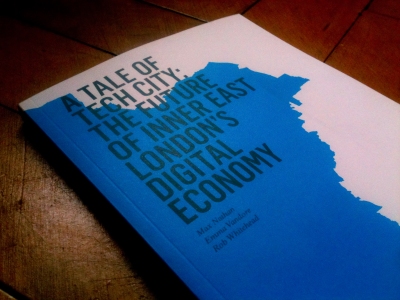
I’ve just finished Enrico Moretti’s terrific new book, The New Geography of Jobs. Moretti is an annoyingly young and brilliant economist at UC Berkeley who made his name with seminal papers on agglomeration, knowledge spillovers and multiplier effects. He’s now following Ed Glaeser and Paul Krugman out of the seminar room into the mainstream.
*
Moretti’s argument is in three parts. First, globalisation has made the knowledge economy increasingly important as a source of productivity and wealth in countries like the US (and the UK). Each ‘innovation economy’ job supports five others, two in other professions and three in local services.
Second, these big shifts have very uneven impacts. Cities concentrate economic activity. Places’ initial advantages matter. People’s ability and willingness to move is limited. So social and spatial disparities tend to grow – even though higher living costs in richer cities partly cancel out higher wages.
Third, our policy responses need to change. Unlike Glaeser, Moretti likes some area-based initiatives. But he also pushes strongly for public science, better public education and raising high-skill immigration.
So far, so familiar – see Glaeser’s The Triumph of the City, or Richard Florida’s The Great Reset. But Moretti arguing that it’s precisely these long term trends and their implications that need to be deeply understood. (Meanwhile, Glaeser gets one mention in the index – the same as Marlene Dietrich – and Florida gets a discreet knife in the ribs in Chapter 5.)
*
The book also has great range. Moretti combines serious urban economics and economic geography with a number of excursions – on the historical origins of Hollywood, Berlin and culture-led regeneration, the dynamics of shared workspaces, cleantech investment, gentrification and ethnic inventors. In many pop academic books these passages feel bolted on – a break from the high-level narrative. In this case they’re actually doing some intellectual work.
One of the richest passages comes early on. In the most successful cities, Moretti suggests, the innovation economy is supporting the return of urban manufacturing. He visits the site of the old Levi’s factory in San Francisco to find ‘dozens of workshops offering hand-crafted products’ – such as bespoke clothing line Cut Loose and the DODOCase iPad case factory.
Across town on Pier 17, Tcho has taken over an old warehouse and converted it into a craft chocolate factory, importing vintage German machinery and high-tech computerised gear. (The chocolate is absolutely amazing.) In London, S.E.H. Kelly (limited-run menswear), The Kernel (craft beer) and Berg’s Little Printer are riding the same wave.
The growth of high-end manufacturing in cities seems rich with possibilities. But Moretti convincingly shows that it’s fundamentally a niche phenomenon. First, this kind of manufacturing is essentially the result of wealth created elsewhere in the city. Although these firms can trade globally, their key market remains local – in that sense, they’re a form of high-end local service.
Second, an important part of these products’ appeal is that they’re unusual, or unique. Both the thing – and the experience of buying it – are positional goods. That business model then allows firms to cover high manufacturing costs. Scaling up would involve either jacking up prices even higher, or moving production to lower-cost locations – precisely what such firms are reacting against.
The most extreme example of this is also the best known. American Apparel gear sells precisely because it’s made in LA (and because of its softcore ads, of course). If Moretti is right, it literally couldn’t be made anywhere else.
*
A more profound transformation, which the book doesn’t touch on, is the emergence of small-scale digital manufacturing. With 3D printers,economies of scale matter much less: there’s no need to retool a production line, and almost infinite customisation should be possible. The technology is already good enough to make specialised car parts, and some nice art objects.
Micro-manufacturing is deeply disruptive – especially when combined with zero-cost marketing and sales online. Craft manufacturers will adopt it. But it’ll be the technology, as much as the brand positioning, that’s doing the hard work.








